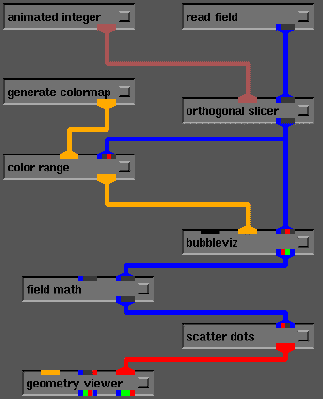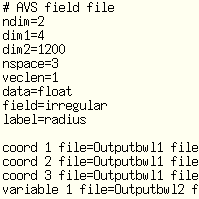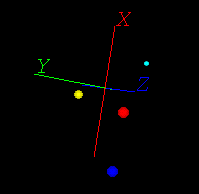


The goal was to create data of a collision between two or more
bowls in space and to predict their trajectory after the collision.
This data should be appropriate to be used by a visualisation program
to generate an animation of the scene.
By making some simplifications in the simulation of the collision it
was possible to write a program that can be used to simulate the
movement of a given number of elastic spherical objects within a
surrounding sphere with a given radius but of infinite mass, so it
does not move itself
Introduction of forces acting on the bowls (gravitational or electric
fields) requires no significant modification of the program, since
time position increments are used to generate the trajectories of the
objects.
The simulation generates a 2D field data as output (1st dimension for the positions, 2nd dimension for the time), where each node represents one object at a specific time (position and radius). This data can be easily used by most common visualisation tools (e. g. AVS, Explorer).
It was difficult to find the right way to visualise the data in
AVS but after looking through many of the modules in AVS we finally
found the solution:
the program creates two files, one with the positions of the bowls
and the other with the radius at each time step. "Orthogonal slicer"
extracts the position of the bowls at a given time (one frame of the
animation). To animate the scene we used "animated integer":
On the left side you can see the network we used to visualise the data, on the right side is one of the frames produced by the AVS-Network and the field description:
|
|
|
|
|